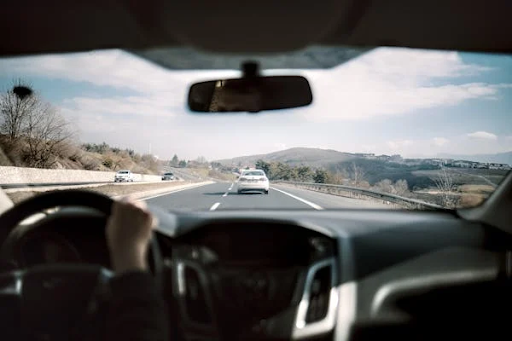Tule fog on I-5, surprise downpours on Highway 99, and the frenetic stop-and-go of US-101 around San Francisco create perfect conditions for chain-reaction collisions. When a dozen cars accordion together in seconds, eyewitness memories blur, official diagrams grow messy, and every insurance carrier tries to pin the first hard brake or last gentle nudge on someone else. In this chaos, high-definition dashcams have become the decisive truth-tellers of California pile-ups—clarifying timelines, disproving speculative fault, and often adding five or six figures to a settlement.
Clear front-and-rear footage can rebut false fault claims, according to Avian Law Group.
Why Dashcams Tower Over Other Evidence
Objective, Time-Stamped Narratives
A dashcam with embedded GPS and real-time clock captures speed, location, and deceleration with a precision no witness can match. Juries trust an impartial lens over conflicting driver testimony, especially when multiple impacts sound alike.
Dual-Channel Coverage
Single-lens cams miss crucial rear-end hits common in pile-ups. Modern dual-channel units record both windscreen and back glass, providing a 360-degree context that shows how forces propagate through the chain.
Data Fidelity & Metadata
Raw video files store creation dates, bit-rates, and embedded GPS strings. When pulled directly from the SD card, this metadata satisfies California Evidence Code § 1400 authentication requirements, paving the way for courtroom admission without expensive digital-forensics battles.
Selecting a Court-Ready Dashcam
| Feature | Minimum Specification | Why It Matters |
| Resolution | 1080p at 60 fps | License-plate clarity at highway speeds; smooth slow-motion playback for experts |
| Wide Dynamic Range | Hardware WDR or HDR sensor | Maintains detail in glare or low-sun conditions common on west-facing evening commutes |
| Storage | 128 GB class-10 card | ≈20 hours loop recording; ample buffer before overwrite |
| Auto-Upload | Wi-Fi or LTE cloud sync | Protects data if SD card is damaged in the crash |
| G-Sensor & Parking Mode | Adjustable sensitivity | Locks files during a hit and records secondary impacts after the initial crash |
Cheap cameras that skip metadata, overwrite files quickly, or record at 24 fps often fail scrutiny when insurers hire video experts to challenge authenticity.
Best Practices the Moment a Pile-Up Occurs
- Safeguard the Card
Remove the microSD once vehicles stop moving. Place it in a labeled evidence envelope; avoid viewing or copying files on a phone that could alter metadata timestamps.
- Duplicate Without Editing
Clone the card sector-for-sector onto two fresh cards or external drives; keep one sealed for chain-of-custody purity.
- Log Chain of Custody
Note who handled the original card, where it was stored, and when copies were made. Courts view flawless custody logs as authentication gold.
- Capture Peripheral Context
Photograph the road, skid marks, debris field, and relative position of each car exactly as stopped. Paired with video, these stills help reconstructionists calibrate speed and force.
- Preserve Vehicle Power
If your battery is intact, leave the dashcam plugged in until footage autosaves; some models need shutdown confirmation to finalize files.
Legal Admissibility Steps in California
- Foundation Testimony – Car owner or installer swears the device worked correctly and location/time are accurate.
- Originality – Provide the raw file; never splice, brighten, or add captions for “clarity.” Edits invite exclusion motions.
- Relevance – Show how the footage answers a disputed fact: speed, signal timing, impact order, or lane position.
- Chain of Custody – Produce the envelope log; missing steps give defense counsel grounds to claim tampering.
Courts increasingly allow dashcam footage once these elements are met, often over defense objections about angle, lighting, or partial coverage.
Countering Common Defense Attacks
| Defense Argument | Effective Rebuttal |
| Lens Distortion – “Wide angle makes speed look faster.” | Calibrate field of view using checkerboard charts and demonstrate true distances. |
| Lighting Artifacts – “Sun glare hides brake lights.” | Photometric analysis shows sensor captured full luminance range; glare does not obscure red stop lamps. |
| Selective Recording – “Clip starts after first impact.” | Present loop record showing camera captured events minutes before and after crash, proving completeness. |
| File Manipulation – “Metadata could be altered.” | Produce SHA-256 hash of original file generated the same day and stored in tamper-evident envelope. |
Synergizing Dashcam Evidence with Other Proof
- ECU (Event Data Recorder) Downloads
Correlate dashcam speed with airbag-module delta-V data to establish consistent velocity changes.
- Cell-Site Analytics
Show another driver was streaming or texting while your video depicts lane drift.
- Traffic-Camera Footage
Marry municipal video to your dashcam’s timeline for multi-angle storytelling; California Public Records Act requests often secure these clips within 14 days.
- Witness Statements
Use footage to refresh witness recollection; their corroboration bolsters authenticity.
When a case goes to mediation, synchronized multimedia exhibits often compel adjusters to raise offers dramatically to avoid jury trials they are now more likely to lose.
Proactive Tips for California Drivers
- Mount the Camera Below Rearview Mirrors – CHP guidelines discourage windshield obstructions, but below-mirror placement stays legal and optimal.
- Test Footage Quarterly – Verify focus hasn’t drifted and memory cards haven’t degraded.
- Label Power Cables – After a crash, tow-truck drivers sometimes unplug devices to shut off alarms; a bright tag warns them to keep power until files save.
- Enable Parking Mode – Secondary hits in a pile-up, such as tow-backs or nighttime theft at the impound lot, will still be recorded.
- Educate Passengers – Teach family members how to remove and secure the card if you are incapacitated.
Conclusion
In sprawling California pile-ups where liability fragments like shattered glass, a well-placed dashcam is the most reliable eyewitness you can buy for under $200. By choosing a robust dual-channel unit, respecting evidence protocols, and integrating video with traditional proof, drivers transform speculative blame games into data-driven fault assignments—and often convert what would have been proportionate pennies into deserved dollars at the settlement table.

